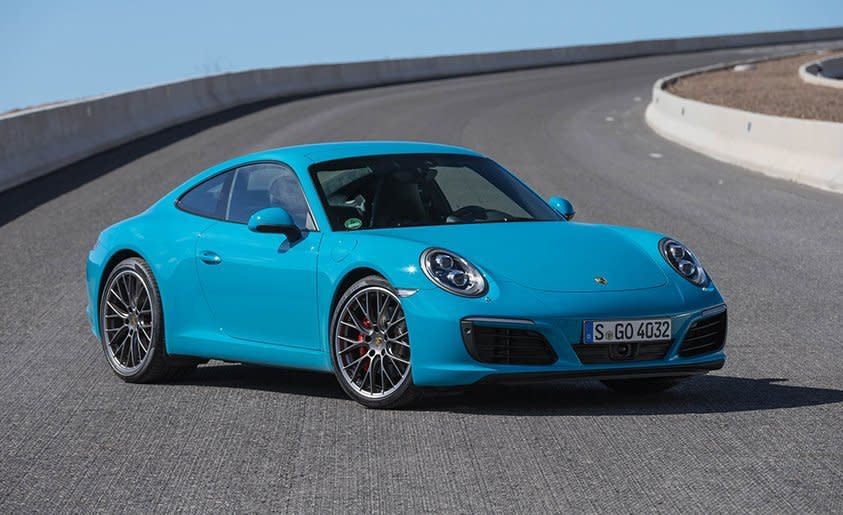Have We Reached Peak Engine?


From the August 2016 issue
Sometime in the latter 1970s, we reached peak carburetor. By that I mean the carburetor on the average family sedan, squeezed by the vise of new regulations, achieved its zenith in complexity and parts count. Take the Rochester Quadrajet as an example, suggests my old friend Paul Wright, a Q-jet expert. Initially an elegant four-barrel design with smaller primaries for quicker part-throttle response and efficient cruising, and larger secondaries for ample wide-open roar, it was the mainstay of fuel metering on GM cars for more than a decade after its introduction in 1965.
But by 1975, control devices, pushrods, and cams were growing on it like boils. There were hot-idle compensators, timed canister purge ports, air-valve dashpots, aneroid metering rod assemblies, and thermostatic coils. Pressed by the safety crusaders and the EPA (established in 1970), GM even gave the Q-jet electronic controls, trying to make it cleaner when cold, more reliable when hot, safer in a rollover, and less stinky when doing nothing at all. As a result, a relatively simple and effective Bernoullian device for atomizing fuel at an appropriate ratio to the incoming air finished its days looking like a steam-powered candy striper. Baffled mechanics like to call it the “Quadrajunk.”

1967 Chevrolet Chevelle SS 396 engine
But even the best carburetor couldn’t deliver the change society was demanding from the automobile, and the industry eventually switched to injection en masse. Briefly, the top of the engine became a simpler place as carbs gave way to fuel rails. However, massive triumphal success cutting the local scourges of smog and soot has only given way to a new societal urgency to attack the global scourge of carbon dioxide. The only way to reduce CO2 is to burn less fuel, so the engine is being pushed to increasingly tortured lengths to find efficiency. The question is, are we now reaching peak engine?
Recently I was sitting in a tech presentation for Porsche’s new 991.2 generation of turbocharged 911 Carreras. The MA2, as Porsche calls the 3.0-liter twin-turbo flat-six that becomes the base engine in the 911, features a host of electromechanical widgets intended to save fuel, drip by drop. Electronic control of the oil pump reduces engine load when high pressure isn’t needed. A two-stage water pump speeds the engine up to temperature for emissions and delivers only “need-based cooling” to reduce parasitic losses. A new polymer oil pan saves 4.4 pounds while being durable enough to survive the entire engine being dropped on it from a height of several feet (we saw the video). The assembled camshafts drive high-pressure pumps to deliver fuel to the injectors at up to 3625 psi and are the heart of a glorious temple of expensive, fine-tolerance machining.

2017 Porsche 911 Carrera S
Later I mentioned to the engineer giving the talk that compared with the zillion-part-number MA2 and its zillion- part-number PDK transmission, each with its millions of lines of software code, an electric-vehicle motor and battery look as simple as a rope and pulley. Surely, simplicity alone is a significant inducement for automakers to invest in EV development? The engineer nodded, then talked about all the shops making engine bits around Weissach that could be facing hard times. In the post-Dieselgate VW Group, electricity is all anyone seems to be interested in. Porsche Cars North America’s new CEO, Klaus Zellmer, confirmed as much that evening at dinner, when he dismissed the rumored 960, a quad-turbocharged flat-eight coupe, as something Porsche has studied but that is “irrelevant” given the group’s focus on electric and hybrid technology.
EVs have issues, from range to weight to cost to consumer acceptance, and their ubiquity may be a decade or two off. But the internal-combustion engine seems to be in danger of collapsing under the weight of its own Gordian complexity. I asked my colleague K.C. Colwell if he could think of any recent examples of engine development gone bonkers. He quickly emailed back a list, including Volvo’s turbo- and supercharged 2.0-liter four, Audi’s triple-boosted 3.0-liter diesel V-6 with twin turbos and an electric supercharger, and Ford’s 10R80 10-speed transmission for the F-150, which has a wide enough ratio spread to keep the engine revs below 1400 rpm in the EPA economy cycles. We’ve reported on dual-injection systems, water injection, several quad-turbo engines, and, from Volkswagen, a 1.5-liter four with an exotic variable-geometry turbo and cylinder deactivation, which means it runs as a two-cylinder because, you know, two is the new four and four is the new 12. More systems, more software, and more of the engine experience simulated through sound generators and robo controls.
Well, if this is indeed peak engine, don’t be too downcast. It’s been a good run, and tremendous simplification may be on its way. Yes, electric motors, whoopee, but then again, weren’t you just complaining that cars are too dang complicated to work on anymore?

